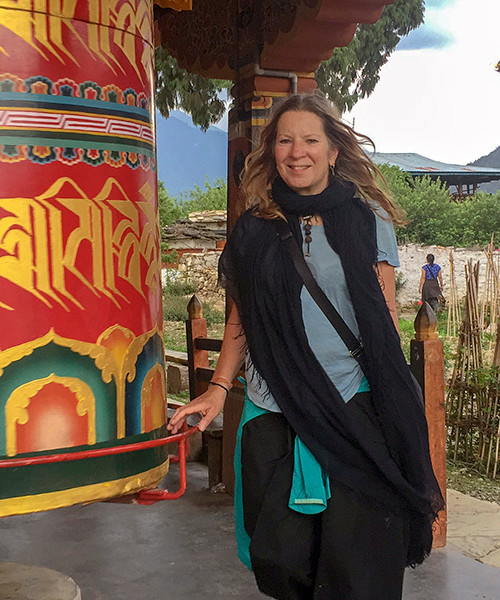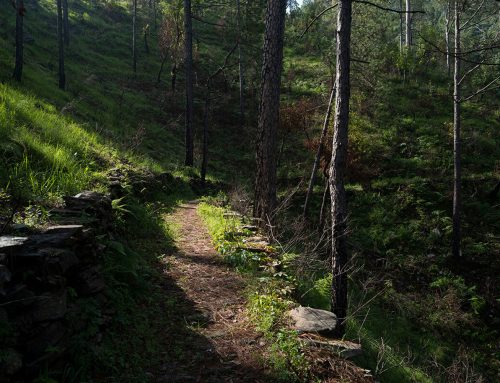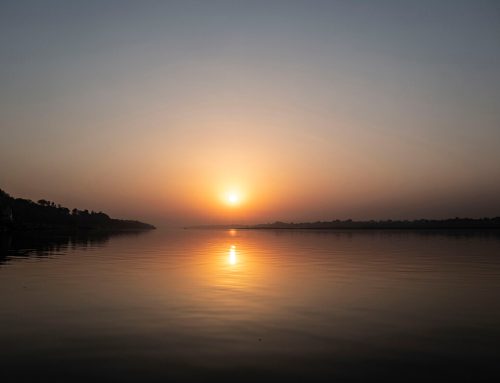E T H E R
The pilgrimage circuits of Varanasi are a physical expression of a celestial cosmic plan
Varanasi has had many names, but by 2 B.C.E., the words ‘Varanasi’ and ‘Kasha’ became synonymous for the holy city. Varanasi refers to the urban settlement, Kashi is the sacred realm encircled by the outermost pilgrimage circuit. Kashi means ‘concentration of cosmic light,’ first used in the Atharva Veda (V.22.4), a 15 BCE text that says, “Kashi shines and illuminates the universe. Kashi makes moksha (liberation) dawn on everyone by giving wisdom.’

Outer Pradaktion, Varanasi, India
It’s true that when you enter Varanasi, you feel reborn into a sacred cosmos. The light is luminous and I feel that magic could arise at any moment. But, there really is something ‘out of this world’ going on here. Kashi is said to exist in time and space separate from other places in this world. It is believed to be the embodiment of heaven on earth. Interestingly, it’s a place organized by pilgrims, rather than kings. Kashi is said to be a ‘cosmogram,’ or mandala, comprised of an intricate web of 56 pilgrimage circuits, five of which surround the city in concentric circles. The circumference of the outer pradaktion, or Panchakroshi, defines a sacred space in which all beings that die inside its boundaries are granted moksha by Shiva.

Outer Pradaktion, Varanasi, India

Outer Pradaktion, Varanasi, India
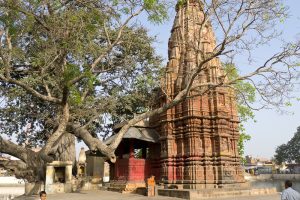
Kashi is physical expression of cosmic order with Vishvanath temple as its innermost sanctuary protected by successive shells. According to P. B. Singh in Banares Region: A Spiritual & Cultural Guide, many sacred sites in India duplicate a celestial realm and reflect cosmos-magical power. Kashi is a celestial–archetypal city where three parallel realities exist together as a sacred spatial system. If one walks the pilgrimage circuits, the cosmogram is made spatially visible, weaving together the macrocosmos (cosmos/heaven), mesososmos (material world/earth) and microcomos (temple/human body). These three realms come together around a central axis on which the cosmos turns, and is considered to be a communication link between heaven and earth. This axis mundi is similar to Kundalini, in Laya Yoga and other tantric practices, where energy rises up the Sushumna Nadi and pierces the chakras as it ascends.

Outer Pradaktion, Varanasi, India

Outer Pradaktion, Varanasi, India
Varanasi is the mesocosmos in which the human complexity of the microcomsos and the cosmic-temporal stability of the macrocosmos come together. The epicenter of the world is Jnanavapi Kupa, the ‘well of wisdom’ or jyotilingam in Kashi Vishvanath Temple. It’s here that Shiva dug into the earth with his trident to cool the lingam. The waters that sprang up were the liquid form of jnana, the light of wisdom. The act of circumambulation around the symbolic center of the universe enables pilgrims to perceive the universe in its entirety, to experience and imitate the primordial rhythm of the cosmos, and ultimately to merge with the cosmos and the Absolute.

Outer Pradaktion, Varanasi, India
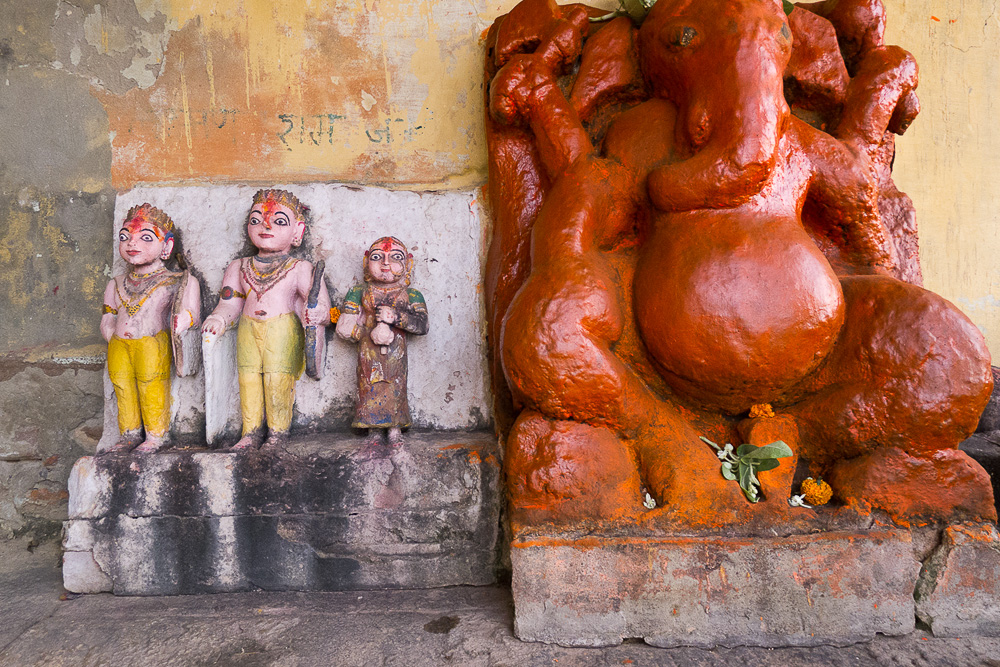
These five pilgrim circuits (Caurasikroshi, Panchakroshi, Nagara Pradakshina, Avimukta and Antargrha) represent the five elements (earth/water/fire/wind/ether), five parts of the human body (head/legs/face/blood/heart), five stages of transcendental power (consciousness/action/cognition/wisdom/bliss), the five sheaths (food/mind/breath/intellect/bliss), and the corresponding sacred number of shrines/images on the route, to merge the human and the divine. I can’t tell you any more, as I honestly don’t know. The concept alone is sublimely beautiful, but almost incomprehensible to my not-so-subtle mind. It is certainly beyond the scope of my intellect. The only way to realise a city believed to be ‘out of this world’ is to experience it through walking. And millions of pilgrims have tread on the path that leads them from outer to inner space.

Tank, Outer Pradaktion, Varanasi, India

Shiva Lingham, Outer Pradaktion, Varanasi, India

Nandi, Outer Pradaktion, Varanasi, India
As a modern yogi running out of time, I jump on the back of Umesh’s scooter and travel out into the ether and circumambulate the Pancakroshi Yatra in an afternoon. This cosmic circuit is older than the Mahabharata (400 BCE), one of the oldest pilgrim routes in India. It’s 55 miles/88.5 km in length, takes five days to walk, and has 108 shrines along the way. The number 108 refers to 12 months in a year (or 12 zodiacs of the cosmic circuit) x the 9 planets in Hindu cosmology. I have no idea I’m inside a sacred mandala, nor do I understand the symbolism of the yatra, but I experience the five gross elements in my body and they are blissful. If only the gods were so lucky to feel human form. Sounds become vibration, wind touches my heart, I smell the earth, taste the water in sacred tanks, and my inner agni (fire) is ignited in ancient shrines, where I both see and am seen by the residing deity. I listen both to the vibration from the motor and the sound of AUM in my heart. There are beautiful temples situated on exquisite tanks, sacred fields, stone carvings of yogis and goddesses, mud-waddled houses and piles of cow dung patties, chai shops – all dotted along a rural landscape seemingly untouched by the modern world.

Outer Pradaktion, Varanasi, India

Outer Pradaktion, Varanasi, India

Outer Pradaktion, Varanasi, India

Outer Pradaktion, Varanasi, India
I understand the importance of effort and intention on spiritual path and have utmost respect for the pilgrims. It must be incredibly powerful to actually walk this route, and pray at each shrine with full knowledge as to who the deity is and what it represents, as well as witness day dissolving into night, the motion of the planet, and feel a part of the cosmos. Even on a motorbike, I like to believe that once inside the mandala, its magical force, seen or unseen, will realign my own being with the comic spatial system, purify my karmic actions, transform physical substance with the power of the spirit, allow me to see the divine light, merge with all that is around me, and move closer to my own liberation.
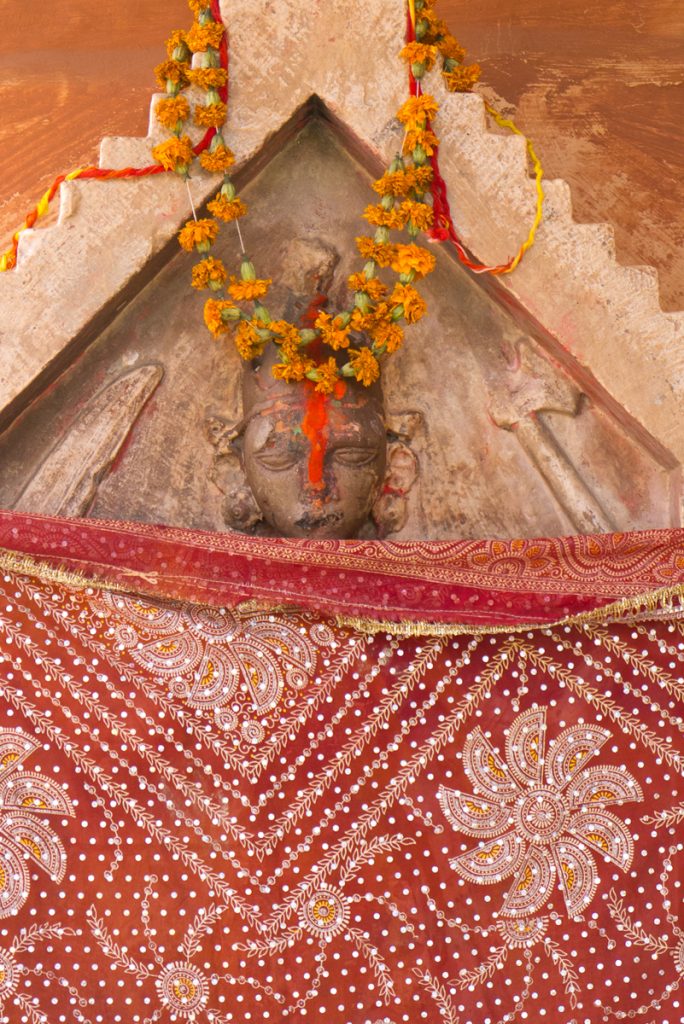
In Jonathan P. Parry’s book, Death in Benares, he writes that Kashi is both preserved from the ravages of time, and that time has indeed taken its toll.
“It is not Kashi itself which has degenerated, but man’s ability to perceive it. The soil is gold, the city is suspended in space and Shiva does wander in it daily; and if we cannot see all this it is because we do not have the ‘divine sight’ of a yogi.”

Outer Pradaktion, Varanasi, India
I’ll be forever grateful to my brilliant guide, Umesh, who revealed the magic of his city, with genuine devotion and yogic insight. I feel his intense gaze, eyes so dark his pupils disappear into this most sacred of holy cities. I’m not sure how to drag myself away from such pure ecstasy, except to say that my excellent guide puts me safely on to a train heading north. As I board the train he hands me two polished iron rings, sliced from the boat ring, and they fit perfectly. I feel the heaviness of Pluto recede behind the clouds.
Om Namah Sivaya.
♦
Heather Elton is a yogini, writer and photographer living in London.

